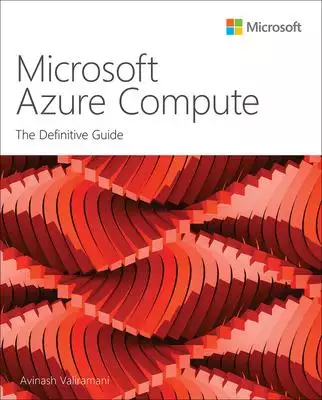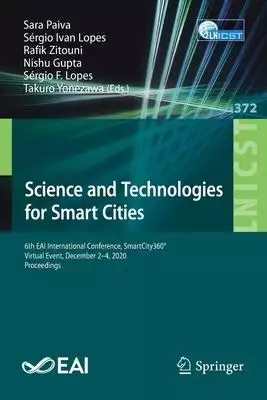Cloud App Security p的問題,透過圖書和論文來找解法和答案更準確安心。 我們查出實價登入價格、格局平面圖和買賣資訊
Cloud App Security p的問題,我們搜遍了碩博士論文和台灣出版的書籍,推薦Valiramani, Avinash寫的 Microsoft Azure Compute: The Definitive Guide 和的 Science and Technologies for Smart Cities: 6th Eai International Conference, Smartcity 360°, Virtual Event, December 2-4, 2020, 都 可以從中找到所需的評價。
這兩本書分別來自 和所出版 。
國立臺北教育大學 資訊科學系碩士班 蕭瑛東所指導 李宜杰的 醫療物聯網產業技術發展與未來展望之研究 (2021),提出Cloud App Security p關鍵因素是什麼,來自於醫療物聯網、人工智慧、大數據、安全機制、新冠肺炎病毒。
而第二篇論文國防大學 資訊管理學系碩士班 林杰彬、張芳凱所指導 鄭永義的 我的手機還是我的?行動裝置管理系統遵從意圖的前因探討 (2021),提出因為有 保護動機理論、互惠公平、隱私侵犯、心理所有權、遵從意圖的重點而找出了 Cloud App Security p的解答。
除了Cloud App Security p,大家也想知道這些:
Microsoft Azure Compute: The Definitive Guide

為了解決Cloud App Security p 的問題,作者Valiramani, Avinash 這樣論述:
Proven best practices for success with every Azure compute service! Compute services are key to most Azure cloud solutions, but maximizing their value requires best-practice planning, design, deployment, and operations. Now, leading consultant Avinash Valiramani presents expert guidance for drivi
ng maximum value from Microsoft’s portfolio of Azure compute services for IaaS, PaaS, and FaaS. Drawing on his extensive work with Microsoft’s Azure teams, he covers Azure VMs, VM Scale Sets, App Services, Azure Virtual Desktops, Azure Container Instances, Azure Functions, Azure Batch, and other Com
pute services. Whatever your role in delivering efficient, scalable compute services, this deep dive will help you make the most of your Azure investment. Leading Azure consultant Avinash Valiramani shows how to: Dive deeply into the frequently used Azure Compute services to better understand how ea
ch service worksWalk through configuring each compute service and its related features and optionsSize, price, and create Azure VMs, and deliver the right levels of redundancy and availabilityUse VM Scale Sets (VMSS) to integrate VMs with load balancing and autoscalingHost web applications, mobile a
pp back ends, and REST APIs via Azure App ServiceRun desktops-as-a-service at scale with Azure Virtual Desktop (AVD)Easily deploy containers on demand with Azure Container Instances (ACIs)Use serverless Azure Functions to build web APIs, process streams, and manage message queuesAbout this BookFor e
veryone interested in Azure infrastructure, including IT/cloud admins, security specialists, developers, engineers, and others at all levels of Azure compute experience.Especially useful for experienced IT pros in mid-sized to large organizations who have deployed, operated, monitored, upgraded, mig
rated, or designed infrastructure services.
醫療物聯網產業技術發展與未來展望之研究
為了解決Cloud App Security p 的問題,作者李宜杰 這樣論述:
本文藉由研究文獻、產業資料及技術報告的內容,進行分析醫療物聯網的產業及技術現況,並進一步探討在全球新冠肺炎病毒疫情肆虐下,醫療物聯網扮演降低疫情衝擊之功能及角色。使用醫療物聯網作為健康監視系統,可以通過使用可穿戴健康監視設備、無線人體局域網、人工智慧和基於雲端遠程健康測試來提供即時監視。所已利用醫療物聯網功能組件(例如數據收集,存儲,傳輸和分析)來控制傳染病傳播的預警系統會很有幫助。本研究除了說明醫療物聯網的結構、生態系統、應用程式及穿戴裝置外,也介紹認知醫療物聯網及人本角度的醫療物聯網,並特別於第三章研究方法於實施,說明了「降低疫情衝擊的醫療物聯網結構」、「醫療物聯網中的人工智慧和大數據技
術」、「醫療物聯網的安全機制」、「各國(台灣、韓國、德國)因應新冠肺炎病毒上的醫療物聯網應用和技術」、「應用醫療物聯網降低新冠肺炎病毒疫情衝擊」。最後本研究說明了醫療物聯網未來的挑戰為「安全機制」、「安全有效的演算法」、「能源效率」、「交互操作、標準化及規格」、「隱私」及「信任」等潛在問題,以及對產業及後續研究提出建議。
Science and Technologies for Smart Cities: 6th Eai International Conference, Smartcity 360°, Virtual Event, December 2-4, 2020,

為了解決Cloud App Security p 的問題,作者 這樣論述:
AI-assisted Solutions for COVID-19 and Biomedical Applications in Smart-Cities.- IoT and AI for COVID-19 in Scalable Smart Cities.- Automated Segmentation of COVID-19 Lesion from Lung CT Images using U-Net Architecture.- COVID-19 Patient Care: A Content-Based Collaborative Filtering Using Intelli
gent Recommendation Systems.- A new Blood Pressure prediction approach using PPG sensors: subject specific evaluation over a long-term period.- 5G network Slicing Technology and its Impact on COVID-19: A Comprehensive Survey.- An Empirical Study of Trilateration and Clustering for Indoor Localizatio
n and Trend Prediction.- Covid-19 Detection on CT Scans using Local Binary Pattern and Deep Learning.- Security and privacy issues associated with Coronavirus diagnosis and prognosis Approach for the development of a system for COVID-19 preliminary test.- Application of Distributed Generation for Re
duction of Power Losses and Voltage Deviation in Electric Distribution System by Using AI Techniques.- Non-Linear Control Applied to a 3d Printed Hand To Beacon or Not?: Speed Based Probabilistic Adaptive Beaconing Approach for Vehicular Ad-Hoc Networks.- Reduce 802.11 Connection Time Using Offloadi
ng and Merging of DHCP layer to MAC layer.- Hybrid Machine Learning Model for Traffic Forecasting.- Labeling News Article’s Subject Using Uncertainty Based Active Learning.- Intelligent Edge Processing in the IoT Era Environment Monitoring Modules with Fire Detection Capability based on IoT Methodol
ogy.- NetButler: Voice-Based Edge/Cloud Virtual Assistant for Home Network Management.- Low-cost LoRa-based IoT Edge Device for Indoor Air Quality Management in Schools.- Technologies for Industrial Internet of Things (IIoT): Guidelines for Edge Computing Adoption in the Industry.- Scalable Approxim
ate Computing Techniques for Latency and Bandwidth Constrained IoT Edge.- Collaborative task processing with Internet of Things (IoT) Clusters.- An Energy Sustainable CPS/IoT Ecosystem.- Inference Performance Comparison of Convolutional Neural Networks on Edge Devices.- Cognitive Computing and Cyber
Physical Systems A non-intrusive IoT-based real-time alert system for elderly people monitoring.- A Smartphone Application Designed to Detect Obstacles for Pedestrians’ Safety.- Automatic Generation of Security Requirements for Privacy-Preserving Blockchain-Based Solutions in the Internet of Things
.- Assessment of Video Games Players and Teams Behaviour via Sensing and Heterogeneous Data Analysis: Deployment at an eSports Tournament.- A feature-fusion transfer learning method as a basis to support automated smartphone recycling in a circular smart city.- Are Neural Networks Really the Holy Gr
ail? A Comparison of Multivariate Calibration for Low-cost Environmental Sensors.- MOBIUS: Smart Mobility Tracking with Smartphone Sensors.- An Attack-resistant Weighted Least Squares Localization Algorithm Based on RSSI.- Promotion as a Tool of Smart Governance in Cities.- Identity Inclusion: A Dig
ital National Identification for All Computer Vision Assisted Approaches to Detect Street Garbage from Citizen Generated Imagery.- Smart Governance in Urban Mobility Process.- 37 A Framework for GIS-enabled Public Electronic Participation in Municipal Solid Waste Management.- A Crowd-sourced Obstacl
e Detection and Navigation App for Visually Impaired An ecosystem approach to the design of sensing systems for bicycles Calibration of Low-cost Particulate Matter Sensors with Elastic Weight Consolidation (EWC) as an Incremental Deep Learning Method.- Person-Flow Estimation with Preserving Privacy
using Multiple 3D People Counters.- Quality and Reliability Metrics for IoT Systems: A Consolidated View.
我的手機還是我的?行動裝置管理系統遵從意圖的前因探討
為了解決Cloud App Security p 的問題,作者鄭永義 這樣論述:
國軍人員、各階層主管普遍使用自己的智慧手機執行業務協調、任務交辦及工作回報,而營區內使用個人智慧型手機更是已經成為國軍人員生活的一部份。如同一般企業,手機上普及的通訊軟體更擴大了在公務溝通上的運用,但是組織的資安規定與手機便利性間達到平衡可讓我們研究探討。本研究參考過往文獻,彙整了反應成本、反應效能、自我效能、互惠公平、隱私侵犯、心理所有權、命令與控制方法及自我規範方法等構面,探討國軍人員對手機MDM(Mobile Device Management)的遵從意圖,其中更藉由以規則為導向的道德規範來探討如何調節部分因子對手機MDM的遵從意圖。本研究針對國軍人員採網路問卷調查方式,總計收集 51
2份有效問卷。並以結構方程模式進行路徑分析以檢驗研究假設。研究發現反應成本、隱私侵犯、心理所有權對手機MDM的遵從意圖有顯著的負向關係,反應效能、認知嚴重性、互惠公平對、命令與控制方法、自我規範方法對手機MDM的遵從意圖則有顯著的正向關係,以規則為導向的道德規範負向調節了命令與控制方法、自我規範方法對手機MDM的遵從意圖,研究結果可提供政策制定單位及相關研究參考。